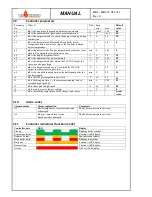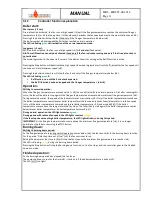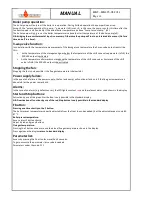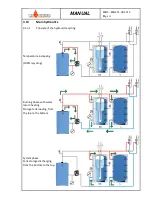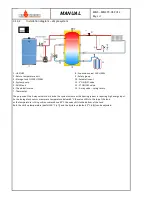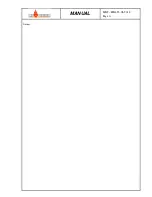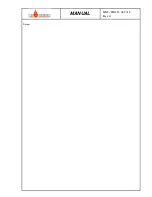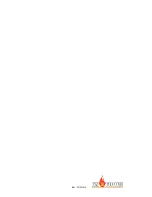
MANUAL
HK2 – HK4 25-08-2014
Page
22
3.2
Chimney and flue gas pipes characteristics
This must conform to local regulations.
It is characterized by its draught, which is the low pressure maintained at the chimney duct
at the inlet of flue gasses from the boiler. The principal characteristics for a chimney to be
correct are the following:
2
Sufficient height, appropriate and constant section
3
Outlet exceed the roof’s ridgepole at least 40 cm
4
Excellent vacuum sealing (no cracks, soot hatches close correctly)
5
Excellent isolation especially in the cold parts (no inflammable material)
6
No communication between a neighboring chimney
7
Cleanliness (periodic sweeping). A chimney used with wood combustion shall be swept
at least to 2 to 3 times per year – here local requirements shall be followed.
8
A rectilinear profile.
9
Inspection hatches at least after each flue gas pipe bend and after 1,5m of straight
length.
Flue gas pipes diameter and minimum chimney diameter: Ø130 mm – Ø150 mm
The temperature of the flue gas could sometimes be very low – e.g. during startup. As these
flue gases are loaded with water steam produced in the wood burning process, often
condensation arises inside the chimney – dependent of degree of insulation of the chimney.
Therefore the chimney must be designed to allow condensation on the internal walls.
Wood burning produces non-negligible quantity of water steam. This results in the
combination of oxygen / hydrogen during the burning, the moisture of the heated air and
the hygrometry of the wood.
On average: 1 kg of wood, which has a moisture content of 25 %, will produce 0.7 kg of
water in form of steam.
The temperature of condensation of the water steam contained in the flue gas comes when
the combustion of the wood is at 60°C. If the temperature of the internal wall of the flue gas
pipes is inferior to the condensation temperature, there is a buildup of condensate resulting
in the risk of having a back flow into the boiler body, which can lead to severe corrosion.
This physical phenomenon clearly shows that good chimney isolation is necessary.
In the case of an existing chimney where the renovation and isolation are practically
impossible or in the case of a strong section of chimney (old open fire or open chimney) an
internal pipe should be an efficient solution.
All flue gas pipes, joined flue gas pipes, flue gas pipes, must have a technical specification or
approval; equally refer to the rules for the health and safety as defined specifically for your
region.
Summary of Contents for HK2
Page 27: ...MANUAL HK2 HK4 25 08 2014 Page 27 3 8 Electrical connections ...
Page 33: ...MANUAL HK2 HK4 25 08 2014 Page 33 No text ...
Page 34: ...MANUAL HK2 HK4 25 08 2014 Page 34 No text ...
Page 35: ...MANUAL HK2 HK4 25 08 2014 Page 35 No text ...
Page 36: ...MANUAL HK2 HK4 25 08 2014 Page 36 Rev 02 010914 ...





















